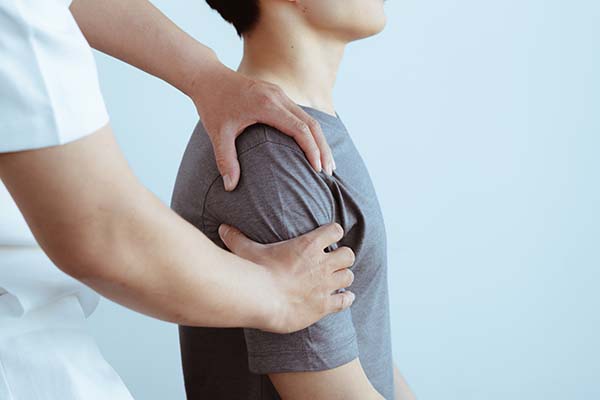Physical Therapy for a Shoulder Rotator Cuff Injury

A shoulder rotator cuff injury can be a painful and debilitating experience. Whether you injured your shoulder due to a sports-related incident, a fall, or repetitive motions, recovery from this injury can be long and challenging. However, an experienced physical therapist can guide you through the healing process, helping you regain strength, mobility, and function in your shoulder. This blog will explore the important role of physical therapy in rehabilitating a shoulder rotator cuff injury.
Understanding the rotator cuff
The rotator cuff is a group of muscles and tendons surrounding the shoulder joint. It provides stability and allows a wide range of motion. Injuries to the rotator cuff can vary in severity, ranging from mild strains and tears to tendonitis or bursitis. Regardless of the injury, seeking the expertise of a physical therapist is essential for optimal recovery.
What to expect from physical therapy for a shoulder rotator cuff injury
Evaluation and specialized treatment plans
When visiting a physical therapist for a shoulder rotator cuff injury, the first step is a comprehensive assessment. The physical therapist will evaluate the individual's range of motion, strength, posture, and overall shoulder function. The assessment helps the physical therapist understand the patient's injury and design a specialized treatment plan to address their specific needs and treatment goals.
Physical therapists utilize a variety of techniques and methods in their treatment plans. These may include exercises to improve flexibility, manual therapy to reduce pain and increase mobility, and techniques like ultrasound or electrical stimulation to promote healing and reduce inflammation. As a result, the treatment plan will be tailored to each patient's unique needs and therapy goals.
Progressive rehabilitation and pain management
One of the main goals of physical therapy for a shoulder rotator cuff injury is to alleviate pain and gradually restore function. The physical therapist will guide the patient through progressive exercises and movements to rebuild strength, improve flexibility, and restore their range of motion. They will also educate the patient on proper body mechanics and techniques to prevent future injuries.
A physical therapist will closely monitor the patient's progress throughout the rehabilitation process and adjust the treatment plan as needed. In addition, they will teach the individual self-management techniques to manage pain and inflammation at home, ensuring that the patient can continue their recovery beyond the physical therapist's office.
Patient education and empowerment
Beyond the hands-on treatment, physical therapists are essential in educating patients and empowering them throughout their recovery process. Physical therapists educate the individual about their injury, the underlying cause, and the expected recovery timeline. By understanding the entire healing process, patients can actively participate in their own recovery, making informed decisions and adopting healthy habits that support their long-term health.
Schedule an appointment
Recovering from a shoulder rotator cuff injury can be challenging. However, with the guidance and expertise of an experienced physical therapist, you can regain strength, mobility, and function in your shoulder. If you are dealing with a shoulder rotator cuff injury, do not hesitate to reach out to our office to ask for assistance. Our team can provide personalized treatment plans and support in your recovery, helping you return to an active and pain-free lifestyle. Schedule an appointment today.
Request an appointment here: https://ocptclinic.com or call Orange County Physical Therapy OCPT at (949) 299-0297 for an appointment in our Newport Beach office.
Check out what others are saying about our services on Yelp: Shoulder Rotator Cuff in Newport Beach, CA.
Related Posts
Massage therapy is widely known for its therapeutic benefits, particularly when administered by an experienced physical therapist. Physical therapists have a unique understanding of musculoskeletal anatomy and movement and can utilize massage therapy to help patients recover. This approach, also known as physical therapy massage, reduces pain and improves overall physical health.According to the National…
Cycling performance therapy can be an important resource for athletes seeking to improve efficiency, prevent injuries, and recover from physical strain. This specialized approach, provided by a physical therapist, addresses the unique biomechanical demands of cycling while promoting long-term musculoskeletal health. Cycling performance therapy is a targeted program designed to improve a cyclist's endurance, strength, and…
Physiotherapy is a medical term that refers to physical therapy. Many individuals are familiar with physical therapy due to the common need for it among sports players and individuals who may have gotten injured or experienced a chronic illness.There is also a common misconception that physiotherapy is only needed when it comes to rehabilitating a…
Hip pain can be a debilitating condition that affects your daily activities and overall quality of life. Seeking hip pain treatment from a physical therapist when it first appears can prevent further complications and improve your health and well-being. Here are four main benefits of early hip pain treatment.Early hip pain treatment can prevent further…
